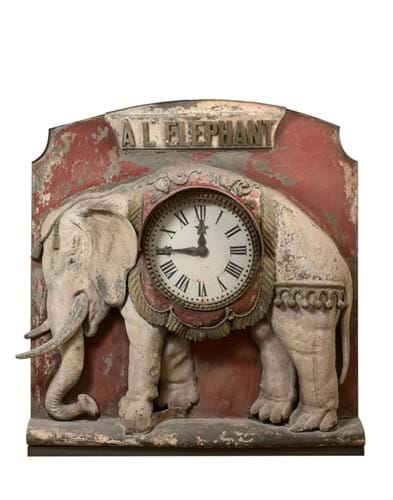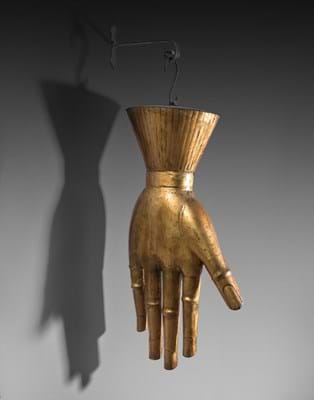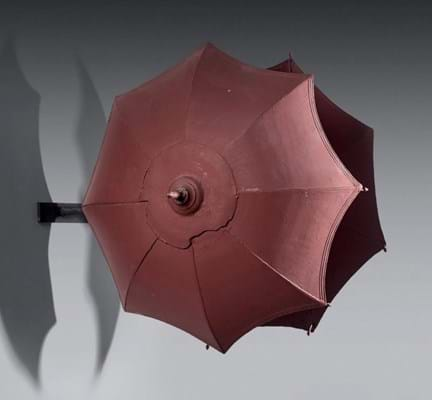They were acquired from the sale of the collection of Roxane Debuisson held by the auction house Lucien on March 18. The museum secured them by its right of pre-emption which allows a French institution to step in and claim the lot for the price determined by the fall of the hammer.
Roxane Debuisson spent the 1960s and ‘70s collecting elements of Paris patrimoine or heritage that were threatened by demolition and rebuilding. Along with topographical paintings and drawings, old street signs and defunct fittings from the metro, she amassed a collection of no fewer than 60 ancient shop signs. She often bought them from the shop owners when the business closed or the building was demolished or modernised with neon signage.
All this was offered in a 189-lot auction which drew an international crowd to the Drouot auction centre and was a total sell-out, but it was the three-dimensional, highly sculptural shop signs created to hang outside Parisian business premises that generated the highest prices.
Sign of the times
The first shop signs appeared in Paris in the 14th century. By the beginning of the 19th century you could find over 1000 around the city. By the early 20th century the number had dwindled to around 200, hence the cultural importance of the efforts made by enlightened collectors like Debuisson.
Among the eight signs secured by the Carnavalet were a pair of Second Empire period gilt iron models of snails from Lazare Successeurs, a snail vendor in the rue de la Cossonnerie in the 1st arrondissement, measuring 2ft 1in x 2ft 11in x 9in (65 x 90 x 25cm) which cost €10,200 (£8715); a giant 2ft 7in (80cm) long gilt iron glove from the same period which hung outside the glove shop Au Gant d’Or on the Boulevard Beaumarchais in the 11th arrondissement that cost €4500 (£3845) and a red painted tôle, 23in (60cm) diameter late 19th century sign, composed of two open umbrellas from a shop on the rue du Pont Louis-Philippe at €1100 (£940).
These acquisitions will be added to the Carnavalet’s existing collection of shop signs.
Top lot

The most expensive sign in the sale, and the top lot of the auction, was a massive 5ft 11in x 6ft 1in (1.8 x 1.85m) zinc and painted tôle model of an elephant centred by a clock face surmounted by the inscription A L’ELEPHANT which cost its purchaser a multi-estimate €31,000 (£26,495).
Dating from c.1804, it came from the Maison Bresson founded in 1824 as a manufacturer of equipment for cafes and bistros such as counters and beer pumps. This was one of two elephant signs that originally stood at the premises on the rue de Lyon in the 12th arrondissement. The other, featuring a barometer, was destroyed in the 1960s before Debuisson acquired its companion from the last proprietors in 1969.











